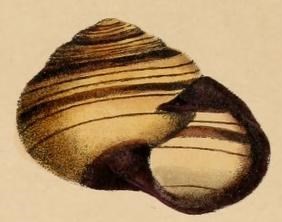
Eryngium is a genus of flowering plants in the family Apiaceae. There are about 250 species. The genus has a cosmopolitan distribution, with the center of diversity in South America. Common names include eryngo and sea holly.

Coleonyx is a genus of terrestrial geckos commonly referred to as banded geckos. Species of Coleonyx are found in the southwestern United States, Mexico, and Central America. Most banded Geckos enjoy dry, warm weather which is why they are typically found in the Peninsular Desert. Some, however, prefer humid forests. They are relatively small lizards, measuring about 5–6 in (13–15 cm) inches in total length. They are nocturnal and are found primarily in dry, rocky habitats. Banded Geckos have preyed by snakes, their main predators being rattlesnakes and glossy snakes. Banded Geckos can decipher how they should react when they obtain a chemical cue based on their knowledge of the predator. A main resource they use to distract the predator is losing their tail or escaping quickly. Banded Geckos possess heteromorphic euchromatic sex chromosomes which play a large role in their historical contingency.

Rattlesnakes are venomous snakes that form the genera Crotalus and Sistrurus of the subfamily Crotalinae. All rattlesnakes are vipers. Rattlesnakes are predators that live in a wide array of habitats, hunting small animals such as birds and rodents.

Captain Owen Stanley FRS RN was a British Royal Navy officer and surveyor.

HMS Rattlesnake was an Atholl-class 28-gun sixth-rate corvette of the Royal Navy launched in 1822. She made a historic voyage of discovery to the Cape York and Torres Strait areas of northern Australia.

The timber rattlesnake, canebrake rattlesnake, or banded rattlesnake is a species of pit viper endemic to eastern North America. Like all other pit vipers, it is venomous, with a very toxic bite. C. horridus is the only rattlesnake species in most of the populous Northeastern United States and is second only to its relatives to the west, the prairie rattlesnake, as the most northerly distributed venomous snake in North America. No subspecies are currently recognized.

Laurence Monroe Klauber, was an American herpetologist and the foremost authority on rattlesnakes. He was the first curator of reptiles and amphibians at the San Diego Natural History Museum and Consulting Curator of Reptiles for the San Diego Zoo. He was also a businessman, inventor, and contributed to mathematics in his study of the distribution of prime numbers.

The western diamondback rattlesnake or Texas diamond-back is a rattlesnake species and member of the viper family, found in the southwestern United States and Mexico. Like all other rattlesnakes and all other vipers, it is venomous. It is likely responsible for the majority of snakebite fatalities in northern Mexico and the greatest number of snakebites in the U.S. No subspecies are currently recognized.

John MacGillivray was a Scottish naturalist, active in Australia between 1842 and 1867.

The fawn-breasted bowerbird is a medium-sized, up to 32 cm (13 in) long, bowerbird with a greyish brown spotted white plumage, a black bill, dark brown iris, yellow mouth and an orange buff below. Both sexes are similar. The female is slightly smaller than the male.

Agnewia is a genus of sea snails, marine gastropod mollusks in the family Muricidae, the murex snails or rock snails.
C. elegans most commonly refers to the model round worm Caenorhabditis elegans. It may also refer to any of the species below. They are listed, first in taxonomic order and, second, alphabetically.

Catenicella is a genus of marine bryozoans belonging to the family Catenicellidae. Bryozoans are colonial animals that live in aquatic environments, and Catenicella is no exception. Members of this genus are found in oceans around the world, with a particularly high diversity in the Arctic and Antarctic regions.
Carbasea elegans is a species of bryozoans in the family Flustridae found in Australia.

Marilynessa yulei is a species of snail in the family Camaenidae.












